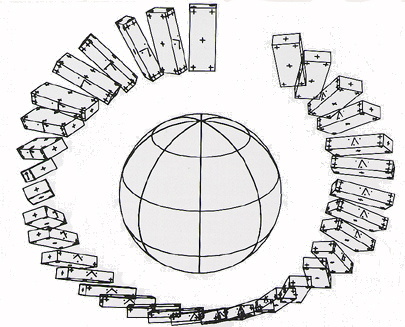
from Cinegraphic.net:
The First Computer Animated Film
story © Michael Betancourt, May 15, 2011 all rights reserved.
URL: https://www.cinegraphic.net/article.php?story=20110514194543691
Edward E. Zajac (1926-2011) created the first computer film as a way to visualize the modeling of the astrophysics work he was doing that was concerned with the orbital dynamics of communications satellites. It is the ability to use digital software to model, and then generate, visual imagery depicting complex, labor-intensive subjects for traditional animation that is the initial reason for the development of computer animation in the 1960s at Bell Labs in New Jersey.
Even though his work was not an artistic exploration of the potentials of computer graphics, nevertheless, he is responsible for the first application of digital technology in the creation of an animated, graphic film rendered with computer modeling software. His animation was a short scientific film produced to visualize the motion of a satellite in orbit around the Earth. It demonstrated his engineering work: his design, animated in the film, presented the technique for keeping communications satellites oriented towards the Earth, thus enabling the use of satellites for relaying signals internationally.

Simulation of a Two-Gyro, Gravity Gradient Attitude Control System (1963) presents the results of Zajac’s statistical analysis in the form of a wire-frame sphere with a rotating rectangular block in orbit around it. This application of digital technology—as a simulation device that can model real, physical phenomena and then present them visually—will produce the foundations of how digital technology automates the physical process of hand-done animation.
This film is a data visualization that shows the way that communication satellites stay oriented towards the Earth: without this pioneering work, the modern communications system that relays signals via satellite would not exist. The animation shows how the orbiting satellite rotates to stay facing the ground at all times.
Copyright © Michael Betancourt May 15, 2011 all rights reserved.
All images, copyrights, and trademarks are owned by their respective owners: any presence here is for purposes of commentary only.